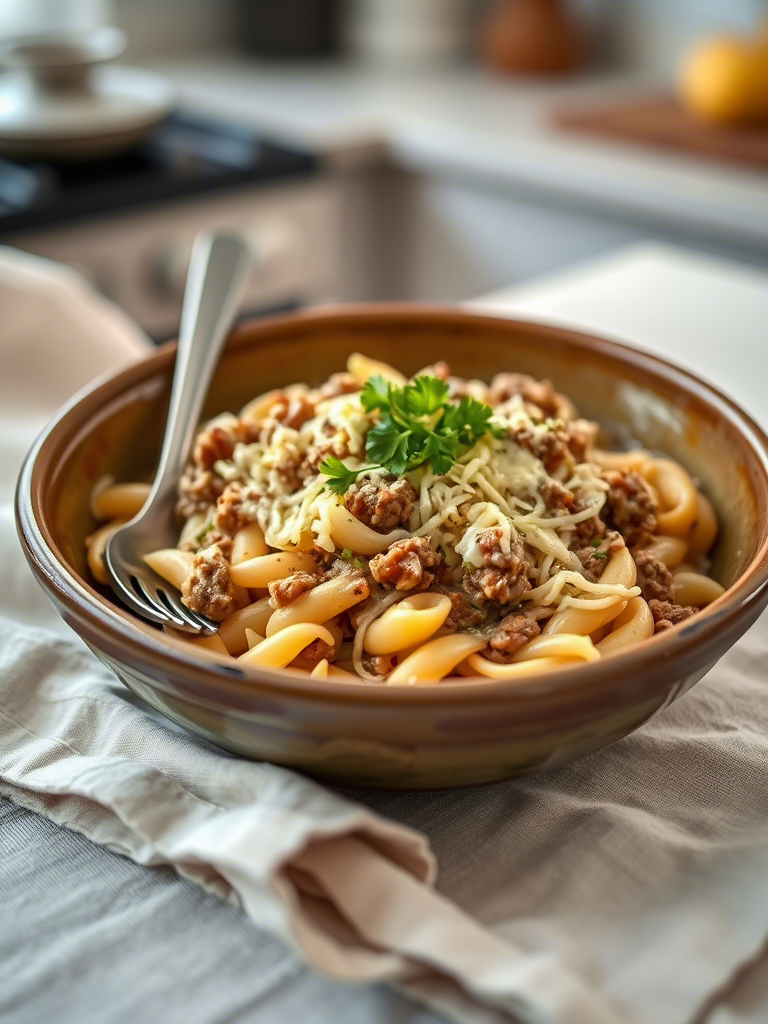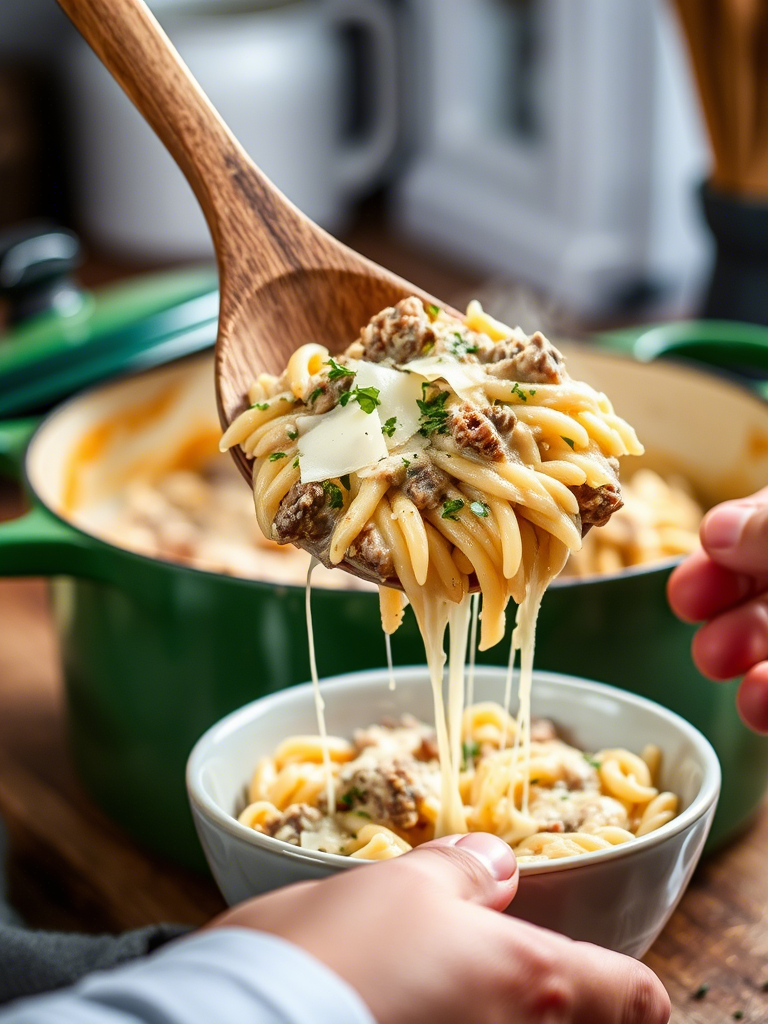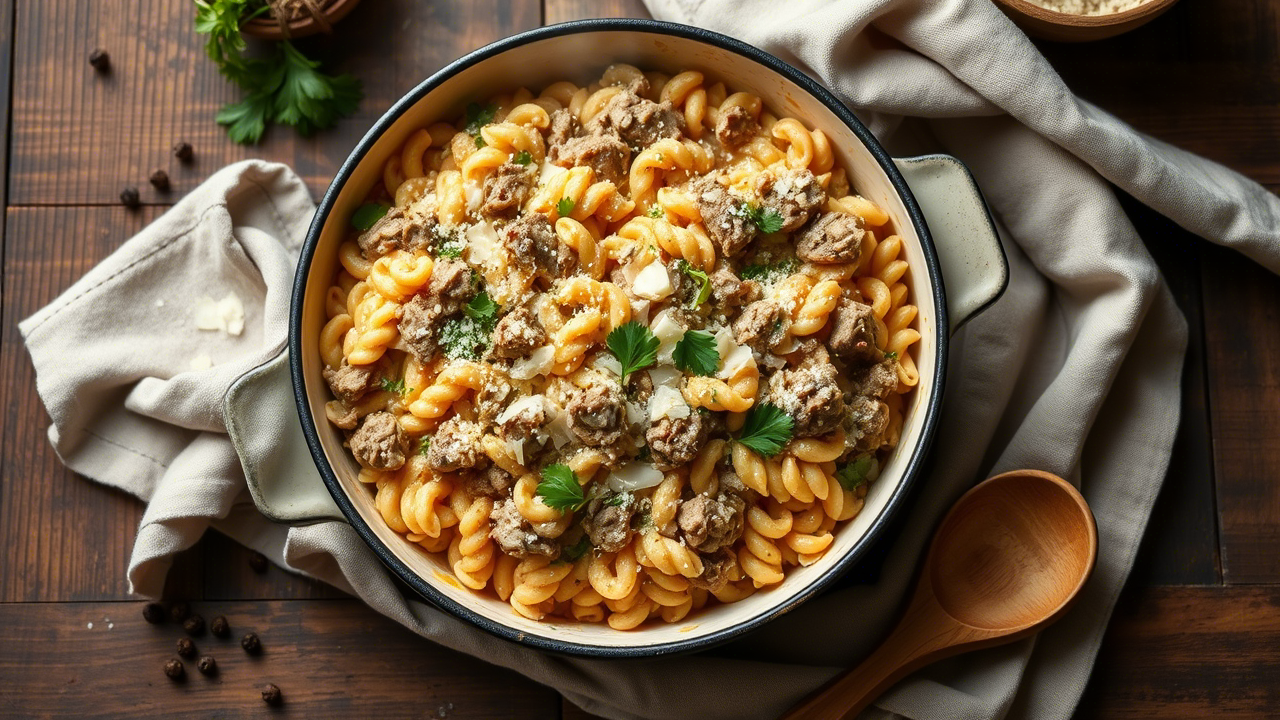Cooking a one-pot creamy ground beef and orzo dish sounds simple, but there’s layers to it. On the surface, it’s a comforting weeknight meal, but when you peel it back, you find culinary technique, ingredient science, and cultural context hiding underneath. This is not just “throw pasta in a pot with beef and cream.” It’s an exercise in flavor extraction, starch management, and textural balance. And, trust me, done right, it can sit on the table of a restaurant just as confidently as it can sit on a family’s dinner table.
Why One-Pot Meals Still Matter
The culinary world loves trends. One year it’s sous vide, next year it’s plant-based everything. But one-pot meals? They don’t go anywhere. Why? Because they balance efficiency with flavor in a way few methods do. Busy homes, professional kitchens, even high-volume catering operations benefit from one-pot cooking. A 2019 study from the NPD Group showed that 60% of American households cook dinner at home at least five nights a week. Time pressure is real. A dish like creamy beef and orzo can cut prep, cooking, and cleanup by almost half compared to multi-pan recipes.
But efficiency alone doesn’t explain its staying power. One-pot recipes allow ingredients to share flavor directly. Orzo cooked in beef drippings is not the same as orzo boiled in salted water. The fat, fond, and aromatics bind themselves into the grain. That’s a flavor delivery system you simply can’t replicate with separate cooking.
Understanding the Key Ingredients
Ground Beef: The Foundation of Flavor
Ground beef seems straightforward, but it’s not. Fat percentage matters. For a creamy orzo, 80/20 (meat-to-fat ratio) is ideal. Too lean and the dish dries out, too fatty and you’re skimming grease. Professionals know that ground chuck delivers a balance of beefy intensity and melt-in-your-mouth tenderness. Browning technique also defines the final dish—high heat, minimal stirring at first, to develop the Maillard reaction. That crust on the beef is where half your flavor hides.
Orzo: More Than Just Tiny Pasta
Orzo is misunderstood. People call it rice-shaped pasta and stop there. In reality, its shape is designed for absorption. Orzo acts like a sponge for sauces. In professional kitchens, chefs often toast orzo briefly before simmering. This develops a nutty undertone, while also strengthening the pasta surface so it holds shape better in long cooking. For a creamy preparation, toasting is essential—it prevents mush and gives dimension.
Cream and Stock: The Balance of Richness
Heavy cream provides body, but on its own, it overwhelms. A true one-pot creamy beef and orzo balances cream with stock—usually chicken or beef stock. Why? Because cream without stock equals flat richness, no lift. Stock adds savory backbone and distributes flavor through orzo as it cooks. In tests conducted by America’s Test Kitchen, dishes finished with half cream and half stock had 30% higher reported “depth of flavor” scores than all-cream counterparts. That’s data backing what chefs already know.

Building the Recipe Step by Step
Step 1: Browning the Beef Properly
This is the make-or-break moment. Start with a heavy-bottomed pot, medium-high heat, and don’t overcrowd. Spread beef into an even layer and leave it untouched for 3–4 minutes. That’s how you get real caramelization. Stirring constantly will steam it, and steamed beef is sad beef. Once browned, you can break it down smaller. The fond left behind is gold—don’t wipe it, don’t ignore it. It will melt into your sauce later.
Step 2: Aromatics and Seasoning
Onions, garlic, maybe a touch of celery. The classic soffritto base is never wrong. Professionals often deglaze the beef fond with these vegetables, allowing their moisture to release the stuck flavor. Salt is layered here, not at the end. Adding salt at this stage pulls water from onions, helping them soften without browning too quickly. For seasoning, black pepper is a must, but consider nutmeg—yes, nutmeg. A whisper of it enhances cream sauces without tasting “sweet.”
Step 3: Toasting Orzo for Depth
Once aromatics soften, toss in the orzo dry. Stir it with the beef and vegetables for a couple minutes until it smells faintly nutty. This isn’t a gimmick—it changes the texture of the pasta. Italians call it risottatura when pasta is cooked like risotto, absorbing liquid slowly. This method elevates orzo beyond “just pasta.”
Step 4: Simmering with Stock
Pour in hot stock, enough to just cover. Professionals often prefer hot stock rather than cold because it doesn’t shock the cooking process. Simmer gently, stirring occasionally. Unlike long pasta, orzo needs movement to prevent clumping. This is where starch begins to emulsify with fat from the beef. That creamy base is building even before cream is added.
Step 5: Finishing with Cream and Cheese
Add cream near the end, not at the start. Early addition risks splitting and scorching. Parmesan or Pecorino Romano adds a sharp, salty counterpoint to creaminess. In restaurant kitchens, chefs often finish with a knob of cold butter for sheen and smooth mouthfeel. It’s unnecessary but worth the indulgence.
Recipe: One-Pot Creamy Ground Beef and Orzo (4 Servings)
Ingredients
- 1 lb ground beef (80/20)
- 1 ½ cups dry orzo pasta
- 1 small onion, diced
- 3 cloves garlic, minced
- 3 cups beef or chicken stock, hot
- 1 cup heavy cream
- ½ cup grated Parmesan cheese
- 2 tbsp olive oil or butter
- ½ tsp nutmeg (optional, but highly recommended)
- Salt and freshly cracked black pepper, to taste
- Fresh parsley, chopped, for garnish
Method
- Heat oil in a heavy pot over medium-high. Add beef, spread evenly, and let brown undisturbed for 3–4 minutes. Break apart and cook until no longer pink.
- Stir in onion and garlic. Season lightly with salt. Cook until softened, about 3 minutes.
- Stir in dry orzo. Toast 2 minutes until fragrant.
- Pour in hot stock. Stir and bring to simmer. Cook, stirring occasionally, until orzo is al dente and liquid mostly absorbed, about 10–12 minutes.
- Lower heat. Add cream, Parmesan, and nutmeg. Stir until creamy. Season with more salt and black pepper.
- Remove from heat. Rest 2 minutes before serving. Garnish with parsley.

Professional Insights: What Makes It Work
Creamy beef and orzo succeeds because of balance. The beef fat emulsifies with starch, cream amplifies texture, stock builds depth, and cheese adds complexity. Each component serves a role, not just filling space.
Texture control is critical. If the orzo overcooks, you lose bite, and the dish becomes gluey. Professionals aim for al dente with a creamy coating, similar to risotto. This is why stirring matters—it ensures starch release is gradual, not clumped.
Flavor layering also separates professional cooking from amateur. Browning beef, sweating aromatics, toasting orzo, simmering in stock—each step stacks flavor. Skip one, and you’ll notice the gap.
Common Mistakes to Avoid
- Overcrowding beef: leads to steaming, not browning.
- Adding cream too early: cream splits when boiled too long.
- Skipping toasting: untoasted orzo lacks depth and tends to clump.
- Underseasoning: cream dulls flavor; salt has to work harder.
- Not resting: a 2–3 minute rest thickens sauce naturally without extra starch.
Variations and Adaptations
Professionals rarely leave a recipe untouched. This dish adapts well. Ground lamb with cinnamon and feta makes a Mediterranean version. Add mushrooms and thyme for an earthier profile. Swap cream for coconut milk, and suddenly you have a fusion leaning Southeast Asian. Or, make it lighter with Greek yogurt stirred in at the end.
Emerging culinary trends favor flexibility. In 2024, Datassential reported that “customizable comfort foods” are trending on menus, with pasta-based one-pots leading the way. A creamy beef and orzo fits perfectly into that category, adaptable to diet, cuisine, and season.
Nutritional Perspective
A serving of this recipe clocks around 550–600 calories, with 30g protein, 45g carbs, and 28g fat. For professionals, balancing richness with nutrition is always a concern. Options include using half-and-half instead of heavy cream, incorporating vegetables like spinach or zucchini, or substituting leaner ground meats. But let’s be honest—sometimes richness is the point.
Conclusion: The Value of Doing Simple Things Well
One-pot creamy ground beef and orzo is not flashy. It doesn’t carry the prestige of duck confit or handmade tagliatelle. But it demonstrates the chef’s craft: maximizing flavor, controlling texture, respecting ingredients. It’s proof that “simple” is often harder to execute than it looks.
For professionals, dishes like this remind us why foundational techniques matter. Browning meat, managing starch, balancing fat with acid—skills you carry into every cuisine, every kitchen. For home cooks, it’s an invitation to see pasta and beef differently, not just as weeknight filler but as a canvas for culinary precision.
If there’s one takeaway, it’s this: cook it with attention. Taste as you go. Don’t treat it like a throwaway dinner. A pot of beef and orzo can be humble and extraordinary at the same time—if you let it.
FAQs
What type of ground beef is best for creamy orzo?
An 80/20 blend strikes the best balance between flavor and fat without making it greasy.
Can I substitute orzo with another pasta?
You can, but orzo’s small size and starch release make it ideal for this creamy, one-pot method.
Do I have to use cream in the recipe?
No, the dish gets creamy naturally from the starch and beef fat, but cream adds richness if desired.
Is this dish good for meal prep?
Yes, it stores and reheats well—just add a splash of broth to revive the texture.
Can I make it with ground turkey or chicken?
Absolutely, though you may need extra seasoning or fat to boost flavor.
Can I freeze creamy beef and orzo?
Yes, but leave out the cream or cheese until you reheat for best results.
What kind of broth should I use?
Use low-sodium beef broth for depth, or swap in veggie stock for a lighter taste.
How long does it take to make?
Usually around 30–35 minutes start to finish, including prep.
Why toast the orzo before adding liquid?
Toasting adds nuttiness and helps keep it from going mushy.
What vegetables go well in this dish?
Mushrooms, spinach, roasted peppers, or kale all work beautifully.
Can I add cheese?
Yes, stir it in at the end off-heat to prevent curdling and clumping.
What’s the secret to deep flavor?
Browning the beef properly and deglazing the pan with wine or broth makes a big difference.
Is orzo a rice or pasta?
It’s pasta—shaped like rice but made from wheat.
Why is this dish so creamy without adding much cream?
Because the orzo releases starch and mixes with the beef fat to naturally emulsify the sauce.
Can I make this dish vegetarian?
Yes, swap ground beef with lentils or mushrooms and use veggie broth.

Mariana is a passionate home cook who creates delicious, easy-to-follow recipes for busy people. From energizing breakfasts to satisfying dinners and indulgent desserts, her dishes are designed to fuel both your body and hustle.
When she’s not in the kitchen, she’s exploring new flavors and dreaming up her next recipe to share with the Foodie Hustle community.

